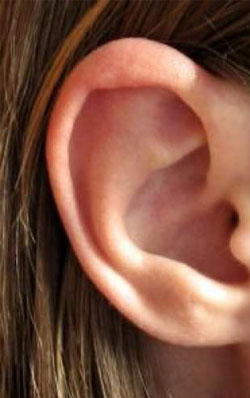
Otitis externa is one of the most common causes of ear pain characterized by pain in the ear especially while touching the pinna (the external auricle) or the tragus, the swelling located on the pinna; sometimes the pain is so severe that routine life becomes severely disrupted, discharge from the ear usually colorless and odorless at first which changes to foul smelling fluid with progression of the disease, temporary loss of hearing due to occlusion of the ear canal by cellular debris, swelling of the ear canal etc, spread of infection to other adjacent structures etc.
Bacterial infection is the most common underlying cause of inflammation of the external ear (otitis externa) however fungal and viral infections may also be responsible. Moist environment in the external ear canal as during swimming, due to excessive sweating, damage to the skin of the external ear canal due to injury by sharp objects while ear picking etc by providing a favorable environment contribute in the causation of otitis externa.
Adequate and timely treatment is essential to prevent the condition become chronic or take a more serious form necrotizing otitis externa (characterized by spread of infection to the skin and cartilage of the pinna sometimes even the adjacent skull bones are also affected) especially in diabetic and immunocompromised patients.
Why it occurs
Bacterial infection especially by those located in the soil and water, is the most common cause of otitis externa however virus and fungus are also known cause infection.
The external ear canal is naturally protected from infection by its shape as its slope is downwards from the middle ear to the outer ear. This characteristic bending of the ear protects the external ear from infection.
Other than this protective structural downward slope several glands located in the external ear canal secrete a wax like substance known as cerumen. Cerumen is slightly acidic in nature hence it prevents bacterial growth in the canal. Being sticky in nature it collects dirt and skin cells shed in the external ear canal and thus prevents blocking of the canal be these substances.
In otitis externa the natural defensive barrier of the outer ear canal is breached. Certain factors contribute in weakening the barrier; these are
1. Excess moisture in the ear canal: as occurs following swimming, staying in excessive humid environment, heavy sweating etc
2. Damage to the skin of the outer ear canal by sharp objects like pins during ear picking etc
3. Allergy following use of certain cosmetic products or by wearing certain jewelries.
Risk factors
Common risk factors include swimming especially not in well maintained pools, excessive ear cleaning, having narrow external ear canal as in children, using certain ear devices like headphones, hearing aids etc
How to treat it
Cleaning of the ear canal is an essential part of treatment as it removes the obstruction in the ear canal and thus facilitates adequate entry of drugs in the ear canal.
Common ear drops prescribed re acidic drops to maintain normal pH of the ear canal, antibiotic, antifungal and steroid ear drops. Pain killers are also prescribed.
Swimming, flying, scuba diving, using ear plugs etc are to be avoided to facilitate healing and prevent further damage.





